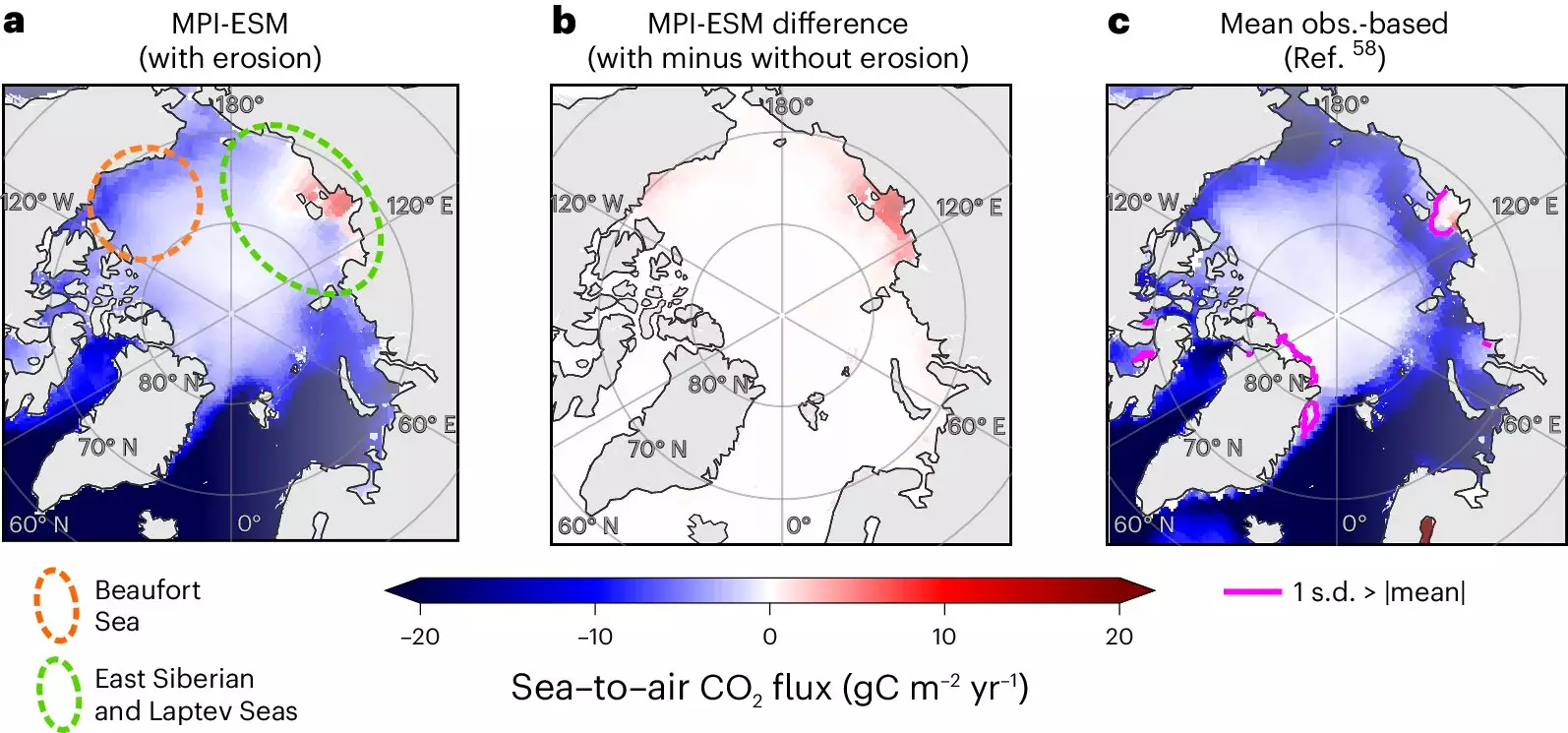The Arctic region, often depicted as a frozen landscape untouched by human activity, is facing an unprecedented crisis as climate change accelerates. Recent research has spotlighted a pressing concern: as permafrost thaws, the Arctic Ocean’s capacity to absorb carbon dioxide from the atmosphere is diminishing significantly. This article delves into the findings of a groundbreaking study published in *Nature Climate Change*, examining its implications for global warming and the critical role of permafrost in carbon cycling.
Permafrost, defined as ground that remains frozen for extended periods, traditionally serves as a long-term carbon reservoir. It harbors approximately 2.5 times more carbon than exists in the atmosphere, making its stability crucial to sustaining Earth’s delicate carbon balance. However, the latest research reveals that the degradation of coastal permafrost is accelerating, a trend attributed to rising global temperatures. This phenomenon is not merely a localized issue; it poses significant risks on a global scale.
Researchers analyzed the consequences of permafrost erosion, finding that this thawing ice is contributing to the release of more carbon dioxide than the Arctic can effectively absorb. By 2100, it is projected that this imbalance may result in additional atmospheric carbon equivalent to about 10% of all car emissions from Europe in 2021. Such alarming projections underscore the urgency of addressing climate change at its root, particularly concerning human-driven factors that contribute to global warming.
One of the most significant drivers of permafrost erosion is the increased vulnerability of coastlines to natural elements. During the summer months, regions along the Arctic coast experience thawing, resulting in unstable soil where the ice once provided a protective shield. The absence of solid ground facilitates wave and storm activity, further exacerbating the erosion process. This dynamic interplay underscores the negative feedback loop: climate change leads to permafrost erosion, which releases carbon, contributing further to climate change.
The study’s lead author, David Nielsen from the Max Planck Institute for Meteorology, highlighted these findings, indicating that various simulations consistently predicted a decrease in the Arctic Ocean’s ability to absorb CO2 due to permafrost degradation. This consistency across models adds robustness to the research conclusions, emphasizing the urgent need for deeper investigation into these changing carbon dynamics.
Not all areas within the Arctic experience these changes uniformly. The research identified specific “hot spots” where permafrost erosion is particularly severe. Locations like Drew Point in Alaska, the Mackenzie River Delta in Canada, and certain parts of Siberia face dire consequences from accelerated coastal erosion. In these regions, the effects on marine ecosystems and local communities are profound. Coastal populations, such as those in Shishmaref, Alaska, are already experiencing pressures to relocate due to rising sea levels and extreme weather patterns.
The implications extend beyond environmental concerns; they affect cultural heritage and community stability. As traditional landscapes dissolve beneath waves and storms, rural communities face existential threats. These changing conditions call for immediate attention and action to safeguard human and ecological interests.
The study suggests that if trends continue, the Arctic’s coastal permafrost could release up to 2.2 million tons of carbon dioxide annually for every degree Celsius increase in global temperature. While this number seems modest in comparison to overall human emissions, it is pivotal that we consider the cumulative effect of countless feedback loops within Earth’s climate system. Each small increase can magnify existing challenges, impacting atmospheric concentrations significantly over time.
Experts, including Kay McMonigal from the University of Alaska Fairbanks, stress the necessity of understanding these processes in greater detail. As the Arctic continues to warm at rates far exceeding global averages, each data point provided by studies like this one offers critical insights into mitigating climate change impacts.
In light of these findings, scientists advocate for enhanced climate action to reduce greenhouse gas emissions. The research underscores a clarion call for sustainable policies aimed at reducing our dependency on fossil fuels. Although the carbon contributions from permafrost erosion are relatively small compared to anthropogenic emissions, they serve as a reminder of the interconnectedness of climate processes.
Ultimately, tackling climate change requires a comprehensive understanding of not just human activities but also how these activities destabilize natural systems like permafrost. Continuing research is essential to quantify these processes and devise effective ways to bolster the Arctic’s resilience against further degradation. Without concerted global efforts, the implications of permafrost erosion will resonate through the environment and society, underscoring the importance of taking immediate and assertive action against climate change.

